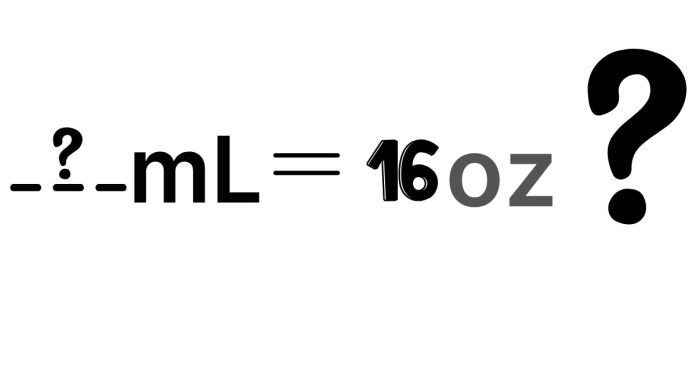When it comes to measurements, especially in cooking, travel, or scientific contexts, it’s important to understand how different units of volume convert into each other. One common question that arises is how many milliliters (ml) are in 16 ounces (oz). Whether you’re trying to convert liquid measurements for a recipe or simply need to understand the conversion for personal use, knowing this is useful.
Understanding Ounces and Milliliters
- Ounces (oz): In the United States, fluid ounces (fl oz) are commonly used to measure liquid volumes, especially in cooking and beverages.
- Milliliters (ml): Milliliters are the metric unit of volume, widely used across the world and in scientific contexts. 1 milliliter is equivalent to 1 cubic centimeter (cc).
The Conversion
To convert ounces to milliliters, we use the following conversion factor:
- 1 fluid ounce (fl oz) = 29.5735 milliliters (ml)
Thus, to convert 16 ounces to milliliters:
- 16 oz × 29.5735 ml/oz = 473.176 ml
So, 16 oz is approximately 473 milliliters.
Practical Example
If you have a beverage bottle that is labeled as containing 16 ounces, you can expect it to hold around 473 milliliters of liquid. This is helpful when traveling internationally or following a recipe that uses the metric system.
Why Is This Conversion Important?
- International Recipes: In many parts of the world, especially outside the U.S., recipes use milliliters. Understanding how to convert between ounces and milliliters ensures that you follow the recipe accurately.
- Travel: Some countries use milliliters for drink sizes, while others use ounces. Knowing how to convert between these units helps when reading product labels or ordering beverages abroad.
- Science and Medicine: Fluid measurements in scientific experiments, health care, and medicine are often done in milliliters. Converting from ounces is essential for precision.
In short, 16 ounces is equivalent to approximately 473 milliliters. This conversion is useful in everyday life, especially for cooking, traveling, or dealing with products that use different systems of measurement. By understanding this simple conversion, you can ensure that you’re accurately measuring liquids in both the imperial and metric systems.


